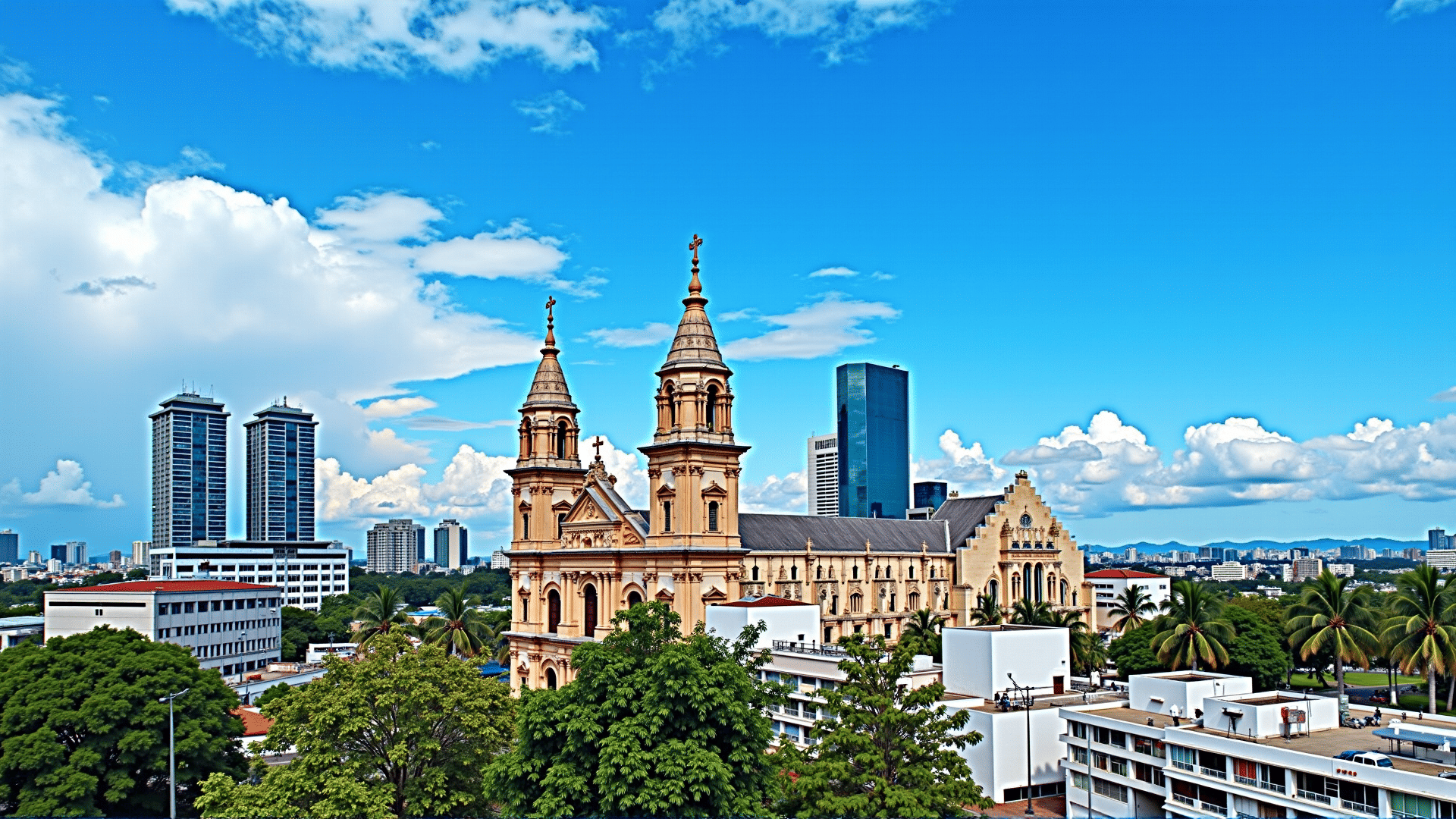In the bustling heart of the Philippines, Manila stands as a fascinating mosaic of architectural wonders that narrate the city’s vibrant history and cultural evolution. This sprawling metropolis offers a journey through time, where past meets present in a stunning array of structures that mark significant historical epochs and artistic styles.
One of the most poignant examples is the San Agustin Church, a venerable institution that has withstood the test of time. This baroque masterpiece, located in the historic Intramuros district, dates back to the late 16th century and is the only surviving structure among all the churches erected before the outbreak of World War II. Its intricate carvings, grand vaulted ceilings, and the legendary trompe-l’oeil murals demonstrate the artistic brilliance of Spanish colonial architects. This landmark continues to be an emblem of perseverance and faith, attracting visitors who seek to marvel at its timeless grandeur.
Moving from the old to the new, the cultural hub known as the Cultural Center of the Philippines (CCP) complex is a nod to Manila’s role as a beacon of contemporary art and culture. Designed by the renowned architect Leandro Locsin, the CCP Main Building is an exquisite example of Brutalist architecture, characterized by its massive forms and minimalist aesthetic. Since its inauguration in 1969, the venue has been a sanctuary for performance arts, serving as a stage for both traditional and avant-garde works that showcase the nation’s rich cultural tapestry.
Another architectural gem is the Art Deco splendor of the Metropolitan Theater. Erected in 1931, this building is a testament to Manila’s golden age of art and style. Despite undergoing restoration after years of neglect, the theater retains its vibrant charm with flamboyant ornamentation, stained glass windows, and intricate sculptures that reflect the artistic spirit of the early 20th century. The revival of this landmark is part of a broader initiative to preserve Manila’s artistic heritage for future generations to appreciate.
In contrast, the contemporary landscape of Manila is increasingly shaped by the innovations seen in structures like One Bonifacio High Street. Situated within the dynamic Bonifacio Global City, this modern marvel is a symbol of Manila’s growth and transformation within the context of the 21st century. Its sleek lines and soaring heights are a testament to the city’s forward-thinking vision and its aspiration to be at the forefront of global architectural trends.
These architectural icons, among many others, not only define Manila’s skyline but also enrich its cultural story. Each building tells its own tale, offering insights into the diverse influences and historical events that have shaped this vibrant city. Exploring Manila’s architectural landscapes is akin to turning the pages of a vivid history book, where every structure contributes uniquely to the narrative of this ever-evolving urban tapestry. As these landmarks continue to be preserved and celebrated, Manila's architectural journey will remain a source of inspiration and pride for generations to come.
